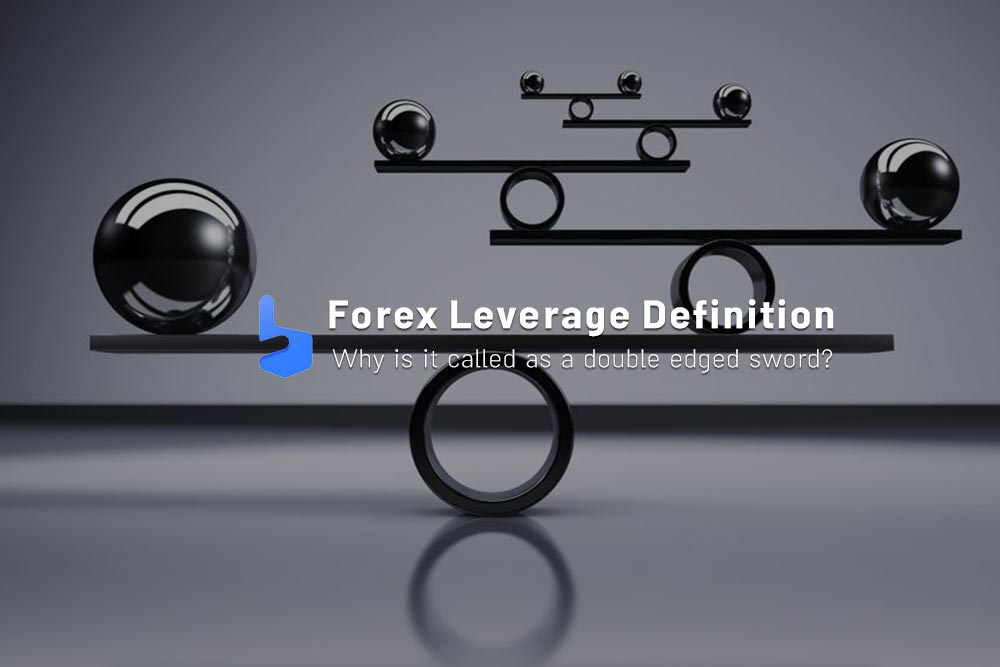What you are about to read:
Leverage is one of the key features in learning forex and can be a powerful tool for a trader. You can use it to take advantage of relatively small price changes and equip your portfolio or increase your capital. In fact, using this forex leverage increases your capital for trading and taking various positions, even if you don’t have all the capital yourself.
While there is no obligation to use this feature in your trades, and it’s entirely up to the trader’s decision, it can lead to increased profits and losses both. Stay with Brokerland to fully understand this concept.
What is Forex Leverage?
Leverage, or margin, increases your capital for trading by using a deposit known as margin. Essentially, you pay a portion of the full trade value, and your broker loans you the rest. The capital involved in your trade, compared to your margin, is known as the leverage ratio. In other words, it is using borrowed capital to increase your credit in forex trades and your positions.
For example, suppose you want to buy one lot of GBP/USD at a price of 1.2860. One lot of GBP/USD is equivalent to 100,000 dollars, so buying the base currency without leverage requires an expense of 128,600 dollars (ignoring any fees or other costs). If GBP/USD increases by 20 pips to reach 1.2880, your position is now worth 128,800 dollars. If you close your position, you’ll have a profit of 200 dollars.
Benefits of Using Leverage
Forex Leverage can be a powerful trading tool, provided you understand how it works and also consider the associated risks. Here are just a few of the advantages mentioned:
- Increased Profits: Essentially, you only need to pay a fraction of the trade value but can earn profits based on the full value of the position. Since profits are calculated based on the full position value, margins can magnify your returns in successful trades and, at the same time, your losses in unsuccessful trades.
- Taking Short Positions: Using it to speculate on market movements allows you to benefit from both rising and falling markets. This is known as taking a short position, or shorting the market, which we will explore in more detail in the future.
Disadvantages of Using Leverage
While it provides a wide range of benefits to traders, it’s important to also consider the potential downsides. Here are a few key points to keep in mind:
- Large Losses: While it increases a trader’s potential profits, it should be remembered that it also increases potential losses.
- Margin Calls: If your position moves against you to the extent that your required margin exceeds your account equity, your broker may require you to increase your account balance to keep the trade open.
Leverage and Risk Management
Leveraged trading can be risky, as losses can potentially exceed your initial investment. However, there are risk management tools available that you can use to mitigate potential losses. Using stop-loss orders is a popular method to reduce risk, as it can limit your losses if prices move against you.
However, markets move quickly, and under certain conditions, your stop may not be triggered at the price you set. There are also various other risk management tools available, which we will explore in more detail in future articles.
An Example to understand better
Let’s look at an example using numbers. Forex trades are conducted using a standard amount of units called “forex lot” with each lot representing 100,000 units of a specific currency. If your account’s base currency is the US dollar, and you open a standard lot position, you are buying or selling 100,000 units of that currency.
For example, if you have $10,000 in your account and you open a 100,000-dollar position (one standard lot), you are trading with 10 times leverage (100,000/10,000). Similarly, if you trade two standard lots with a total value of $200,000 and your account has a balance of $10,000, your account is utilizing 20 times one (200,000/10,000).
In Forex, traders with only $1,000 can potentially trade up to $100,000. Now, let’s consider a scenario in which a trader has a total of $100,000 at their disposal, and the account value increases to $1,000. In this case, the trader has extended their banking turnover by 1%, which is known as 1:1 leverage – something not typically seen in Forex.
Different brokers in the Forex market offer varying ratios. For example, USGFX offers 1:1000 leverage, while Amarkets offers 1:3000. Keep in mind that the concept of this ratio means that by using such leverage, you can open an account with $400 and execute trades of up to $400,000. It may sound exciting, right?
Final Words
While using leverage in trading can be very advantageous due to the requirement of less capital, it also carries a high level of risk and potential for significant losses. Therefore, it’s crucial to be cautious, monitor your positions, and focus on strengthening your trading strategy to prevent substantial losses.











